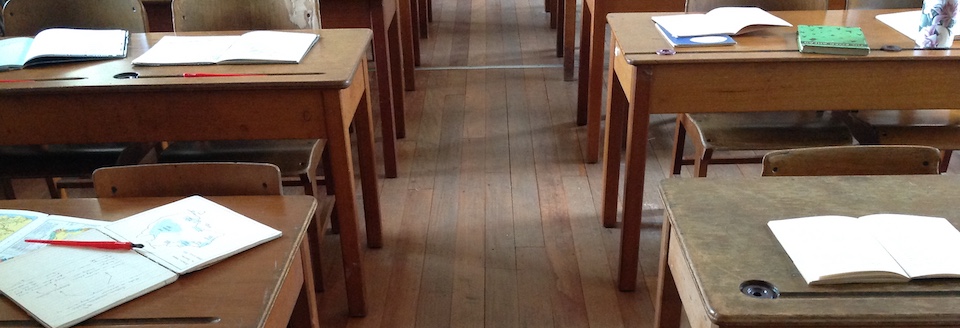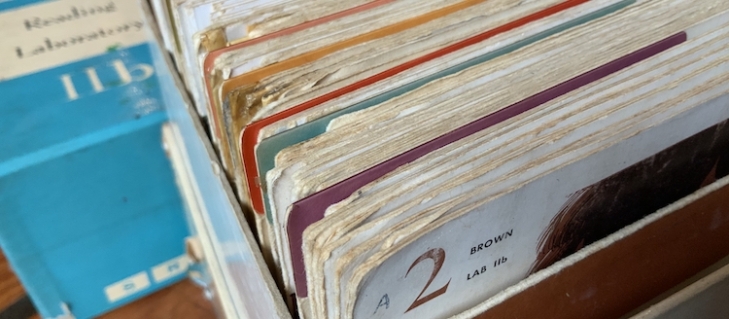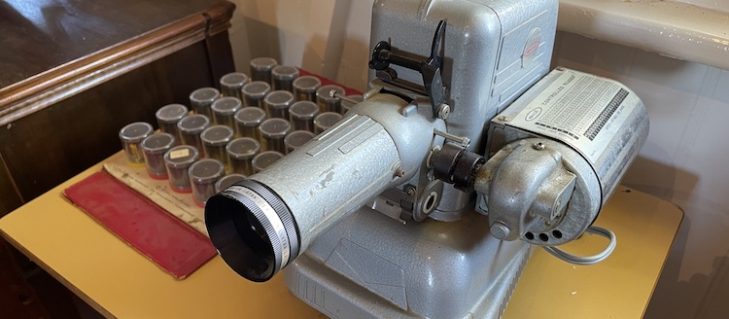1960s technologies
Dianne Robertson and Robyn Minard attended North Ryde Public School in the 1950s and 1960s. In this oral history they recount various memories that involve technologies of the time.
The unsliced bread crust
In the 1950s and 1960s the canteen was called the Tuckshop. Bread was delivered unsliced. We remember buying freshly baked and thickly sliced crusted ends from the loaf of bread. These were affectionately known as ‘doorstops’, topped with butter and either vegemite or peanut butter. Just bursting with lusciousness. What a treat! And they only cost one penny.
Pen and ink
We learnt to write with pen and ink prior to the introduction of the modern day pens, which we fondly remember as biros. On our desks sat the Bakelite inkwells, half full of ink solution and sitting comfortably in a hole fashioned into the timber desks. The ink pen, having a sharp pointed nib, was easily dipped into the inkwell.
Too much ink of course required the use of blotting paper, a cardboard-like absorbent paper. If a student was left handed then writing with ink became a challenge as the fist would smudge the words from left to right. However, a little smudge here and there was acceptable.
SRA reading kit
SRA was also known as a reading laboratory kit. Consisting of a huge box filled with coloured reading and comprehension cards graded in levels of difficulty, it enabled us to work at our own pace and assess our own skills.
SRA reading laboratories consisted of graded story cards, fiction and non-fiction, comprehension questions and answer cards.
Speed reading
Speed reading was a program designed to improve both the speed and comprehension of reading. The teacher would set up a special film projector and a projector screen. A story filmstrip roll was placed in the projector and the words shone up on the screen. However, only one line of words was shown at a time, with a light moving across the words from left to right. The speed of showing each line and word could be adjusted by the teacher. The faster the speed, the harder it was for some pupils to keep up.
Speed reading machines were used in upper primary classrooms in the late 1960s. Each reel contained a text projected onto a screen showing one line at at time at a rapid pace.
ABC broadcasts
For singing lessons we used the ABC Broadcasts and books as a guide. There was a speaker mounted on the wall of our classroom and we followed the lesson broadcast through the speaker.
Crystal radio sets
Some students showed a little more creativity than others when entertaining themselves during the lunchtime break. One boy in particular, named James, brought a crystal radio receiver to school. Commonly known as a crystal set, they were designed to pick up signals enabling the listener to connect with radio stations.
To create the antenna, James would connect his set to anything metal, usually a vertical downpipe, using a pair of crocodile type clips. With friends huddled around him, and only one earpiece to share, they all tuned in to the latest news and music. A connection to the outside world!
Questions and activities for students
- What surprised you in this story? Why?
- What technologies have replaced each of the technologies described on this page?
- What past technology would you have like to use? Why?
Activity
- Imagine you have travelled back in time to the 1960s. Write, speak or draw pictures to explain to the 1960s children what technologies you use for learning to read in the 2020s. Act out the conversation with a partner.



